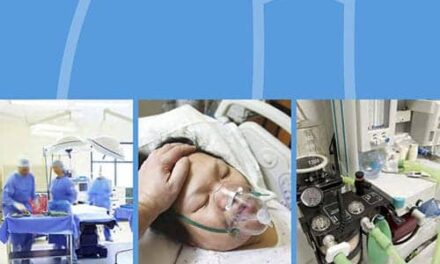New prospects for improving the rapid diagnosis of sepsis
By David Ludvigson
Sepsis—an overwhelming immune response to infection, which can cause a cascade of events—results in life-threatening damage to multiple organ systems throughout the body. And it’s a widespread problem: More than 1.7 million people in the United States and more than 30 million worldwide get sepsis each year, and severe sepsis has a mortality rate of 30%-40%.
Sepsis is also the sixth most common and most costly reason for hospitalization in the U.S., reported in 2014 to be responsible for nearly $27 billion in health care costs each year. Moreover, older adults who survive sepsis have a shortened life expectancy and are at high risk of long-term impaired cognitive and physical function, compared to others their age who were hospitalized for different reasons.
Early identification and the timely start of therapy for sepsis can significantly decrease the mortality from this illness. In fact, the Sepsis Alliance estimates that mortality from sepsis increases 8% for every hour that treatment is delayed—and that more than 80% of sepsis deaths could be prevented by increased screening, and more rapid diagnosis and treatment.
Increasing Awareness
Achieving the rapid diagnosis and treatment of sepsis has been a major focus of both emergency medicine and hospital care over the last decade. Since its beginnings in 2002, the Surviving Sepsis Campaign has developed and issued guidelines aimed at reducing mortality from severe sepsis and septic shock worldwide. Many hospitals now deploy dedicated workgroups and taskforces focused on screening programs aimed at improving early identification and management of sepsis. Such efforts have been most typically focused on the ICU and emergency department.
But, increasingly, sepsis screening is also being initiated in other hospital and pre-hospital units, where early signs of the condition have often gone unrecognized and treatment has been delayed. A common and essential component of the protocols implemented in these hospitals includes the monitoring of inflammatory markers and other sepsis symptoms that can help identify the condition at an earlier stage.
What’s more, a number of nurse-driven initiatives for the early identification of sepsis in intermediate care settings have recently been reported, including one that employs an automated program to survey patient electronic health records for subtle patterns in symptoms, such as low blood pressure and rapid breathing, that could signal emerging sepsis. The computer prompts the nurse overseeing the flagged patient to evaluate his or her condition—and if sepsis is confirmed, the doctor is paged to order the start of antibiotic therapy.
The overall goal of the program is to get any patient who may be developing sepsis on antibiotics within three hours of detection. While screening programs like these have enabled some hospitals to reduce mortality rates from sepsis, they are limited by the frequency with which new data is added into the system; plus, they’re restricted to hospitalized patients, most of whom are in the intensive care unit (ICU).
Developing Rapid Screening Tools
Since early diagnosis and therapeutic intervention is critical to the successful management of sepsis, rapid point-of-care (POC) sepsis screening tools could provide exceptional benefits for further lowering sepsis mortality. Several companies and hospitals are pioneering technologies and computer algorithms for the continuous monitoring of patient vital signs and the potential detection of emerging sepsis—although such efforts are currently only feasible for use in the ICU. Also, once potential sepsis signs are flagged, a diagnosis confirming the condition must still be made.
Efforts to improve diagnostic turnaround times for sepsis have been focused primarily on technological solutions aimed at more rapidly identifying the pathogen that is the primary source of infection. Further, a number of companies have focused on shortening the time to an answer via the use of molecular diagnostic tools. While such methods are faster than gold-standard “blood cultures”—which can exceed 24 hours to provide results—they still take an hour or more to produce a diagnosis.
Moreover, at present, they still require sending samples off to a central lab for testing, adding further delay. In addition, such molecular tests only determine the presence or absence of a specific pathogen(s) and provide no assessment of the patient’s infection load. In order to become useful tools for the rapid “emergency diagnosis” of sepsis, molecular tests will need to reduce sample-to-result turnaround times to less than 30 minutes. Also, they need to become easier to use so that operators with varying skill levels can run them. And molecular tests need to significantly broaden their pathogen coverage.
Further, testing in the immediate emergency phase of sepsis—aimed at the urgent entry of sepsis-affected patients into sepsis treatment protocols—could be significantly improved by the use of POC diagnostic technology focused on the rapid measurement of biomarkers that rise when infection is present. The measurement of lactate levels is already routinely used to aid in the diagnosis of sepsis; but while useful, lactate lacks sufficient specificity to be a single marker for the condition.
Two other biomarkers, C-reactive protein (CRP) and procalcitonin (PCT), are relevant to sepsis, but testing for those substances is typically done in the central laboratory, where turnaround times are several hours to a day and require multiple testing platforms.
Fortunately, a new rapid POC test panel, incorporating measurements for lactate, CRP, and PCT, has been developed in a fully automated, quantitative, handheld diagnostic platform. This POC diagnostic instrument platform can run all three tests simultaneously from a single patient sample (whole blood or plasma) with a turnaround time of about 10 minutes. Use of such a system would reduce costs, streamline testing, increase workflow efficiency, and rapidly deliver useful clinical information. Moreover, it would have the benefit of quickly focusing the physician and hospital on high-risk patients requiring immediate attention and intervention.
In addition to reducing the time to diagnosis in the hospital emergency room and wards, such a rapid, portable system could also be used outside of the hospital environment to help determine whether a patient needs to be transported to a hospital for treatment. This ability could confer significant benefits in such settings as skilled nursing facilities, elderly care centers, convalescent hospitals, or urgent care clinics, where such POC diagnostic platforms might be used to help monitor patients or quickly get them into emergency care.
In conclusion, speed to intervention is critical to improving sepsis patient outcomes. Clearly, the combination of targeted and effective patient screening and accurate, rapid POC diagnosis of sepsis can achieve a significant decrease in sepsis mortality, as well as help reduce treatment costs. Plus, the ability to extend the benefits of such POC testing outside of the hospital setting offers further opportunities for improving the quality and cost of health care.
David Ludvigson is president and CEO of Nanomix, a company developing a mobile point-of-care diagnostics platform and assays in time-critical patient environments. Questions and comments can be directed to 24×7 Magazine chief editor Keri Forsythe-Stephens at [email protected].





